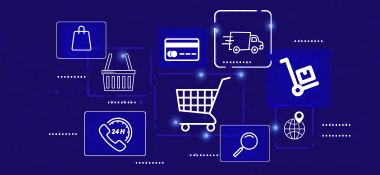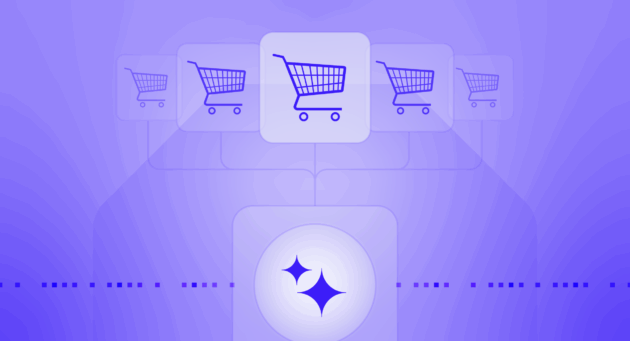As the coronavirus outbreak continues around the world, different countries are seeing different consumer trends. Lockdowns closed stores and sent online traffic surging. Ecommerce sales reached an all-time high, too. To understand how consumers adapted their purchasing habits during lockdown, Criteo conducted a survey of over 13,000 consumers globally.
We found that, as people adapt to buying more things online, they’re also more open-minded than ever when it comes to giving unfamiliar online brands and retailers a try.
According to our “Peak to Recovery” survey, over half (53%) of consumers globally discovered at least one form of online shopping in the past few months that they plan to continue.1
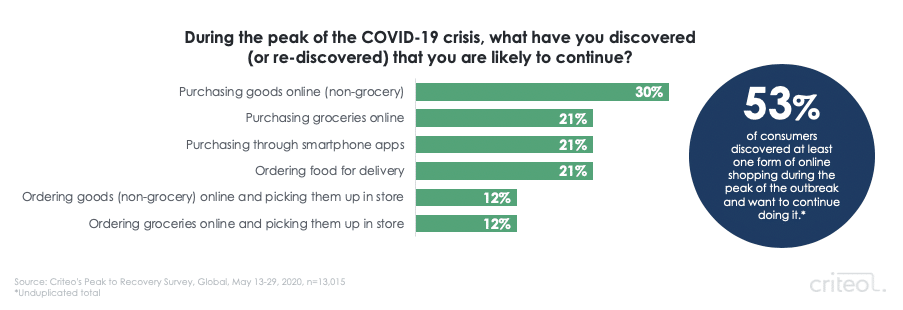
About one in five (21%) bought groceries online, purchased through smartphone apps, and/or ordered food for delivery. An even larger group (30%) purchased non-grocery items. This could include items in categories like apparel, electronics, health & beauty, home & garden, and more.
Data in our interactive Product Insights Finder shows that a wide variety of retail categories have seen online spikes since March, including pet supplies, furniture, sporting goods, and toys & games.
Here are four reasons why now is the best time for businesses to start thinking about how to build long term loyalty with customers:
1. Consumers discovered new brands during lockdowns.
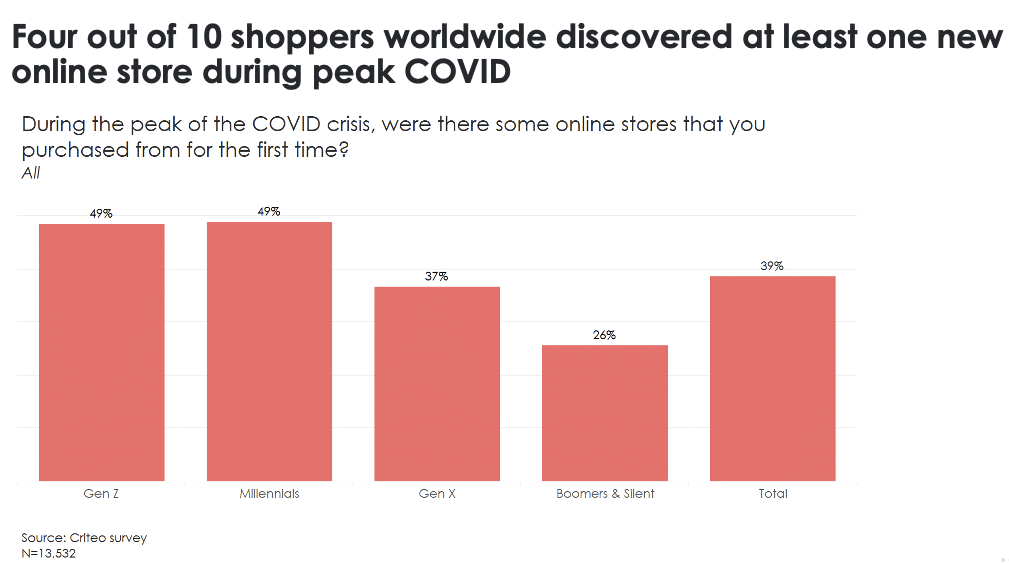
Four in 10 (39%) shoppers worldwide discovered one or more online stores at the height of the pandemic.
About half (49%) of Gen Zers and Millennials, the digital-native younger generations, discovered new ecommerce sites. This was true among older generations, too: 37% of Gen X and 26% of the Boomers & Silent generation found new online stores.
According to a March 2020 survey by Statista, five percent of consumers aged 65 and up in the US bought a product online for the first time due to social distancing and quarantines. The same goes for 11% of those aged 45-54 and 6% of those aged 55-64.
This means that now is an ideal time for businesses to identify and meet the needs of audiences who have just started to explore more options online, or may even be enterting the world of ecommerce for the first time.
2. Ecommerce businesses of all sizes gained new customers.
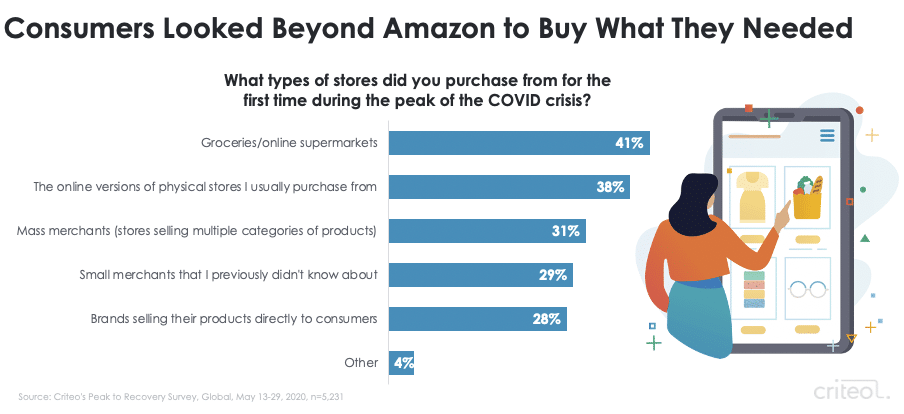
During lockdowns, consumers spent a record amount of time online. Throughout this period, they discovered a variety of ecommerce websites, including:
- Online supermarkets (41%)
- Online versions of the stores they usually purchase from (38%)
- Mass merchants (31%).
Interestingly, three out of 10 consumers discovered small merchants they previously didn’t know about (29%) and direct-to-consumer brands (28%), indicating that big players aren’t the ones who stand to grow. On the contrary, companies of all sizes have an opportunity to build relationships with many who’ve shown they’re open to giving unfamiliar brands a chance.
3. Most consumers will keep shopping at the new stores they discovered.
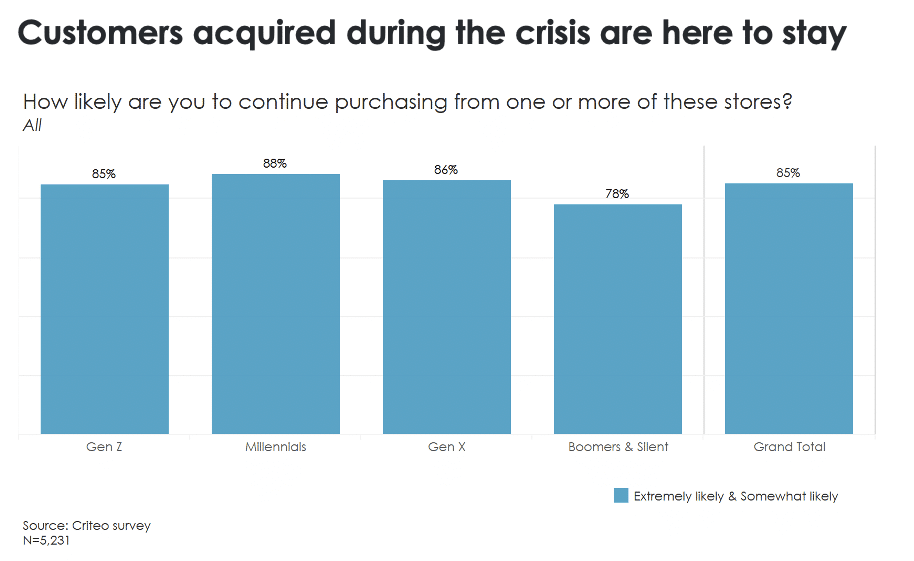
This is an incredible insight for new customer acquisition: Nearly 9 out of 10 people (85%) worldwide intend to spend money in the future at an online store that was previously unknown to them.
And that’s not just the younger set of Gen Zers (85%) and Millennials (88%). The vast majority of consumers across every age group, including Gen X (86%) and the Boomers and Silent generation (78%) think they’ll return to the ecommerce stores they discovered during lockdowns. This is a significant opportunity for brands and retailers to use retargeting to bring these shoppers back.
4. Brands have an opportunity to build customer loyalty right now.
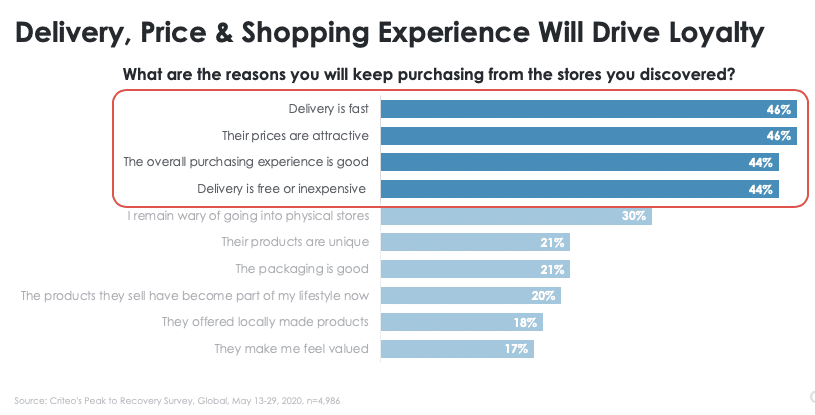
The top reasons respondents cited for choosing to keep shopping at the new ecommerce stores they discovered include fast delivery and attractive prices (46%) as well as good purchasing experience and free or inexpensive delivery (44%).
Brands that can keep the momentum they gained during lockdowns—or enhance their current offerings—by providing great delivery options and seamless checkout experiences stand to retain new customers and keep them coming back.
2020 Consumers are Open to New Businesses
Our research shows that consumers of all ages are open to trying new things in the wake of the COVID-19 crisis. This includes new products and solutions for their needs, as well as new ecommerce brands and retailers.
As the global population continues to adapt to the new normal, marketers can use insights like these to build campaigns that reach consumers at every touchpoint along their customer journey.
To learn more, download our 2020 Rebound Report:
1Criteo “Peak to Recovery” Consumer Survey, Global, May 13-29 2020, n=13,532.


